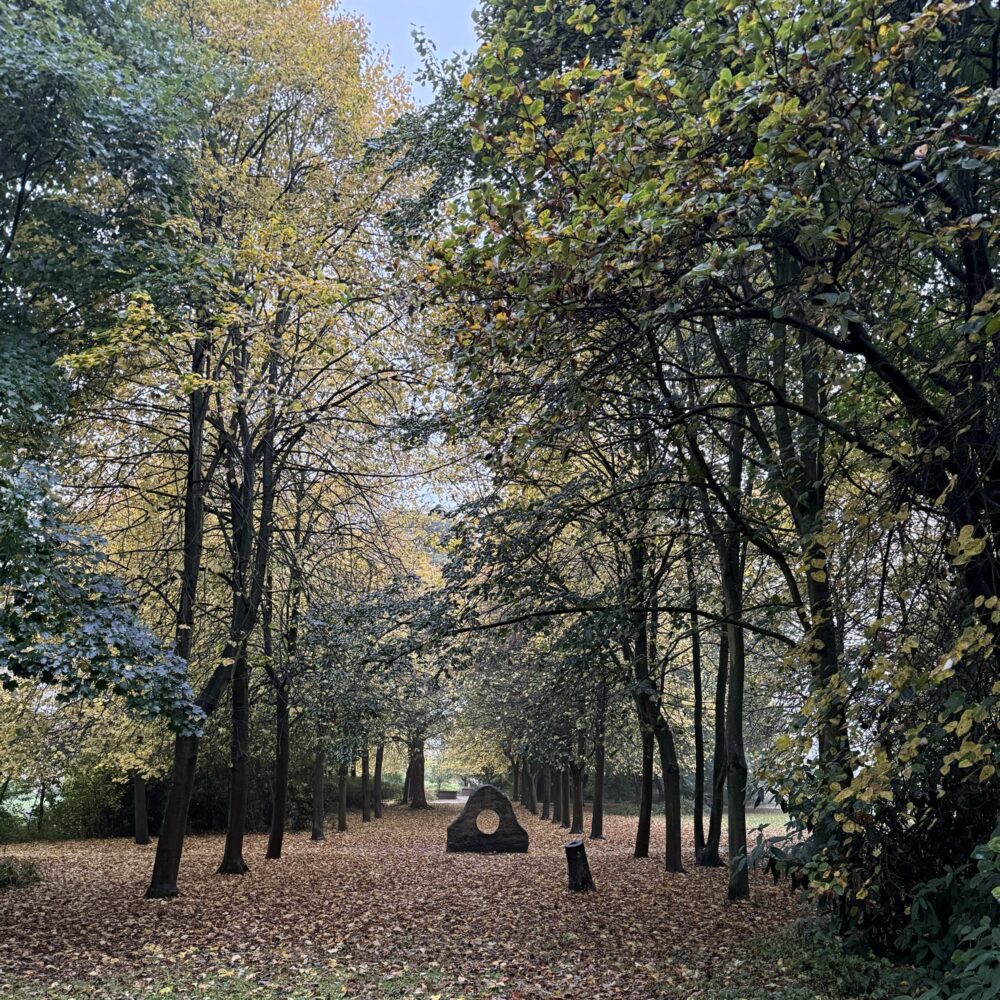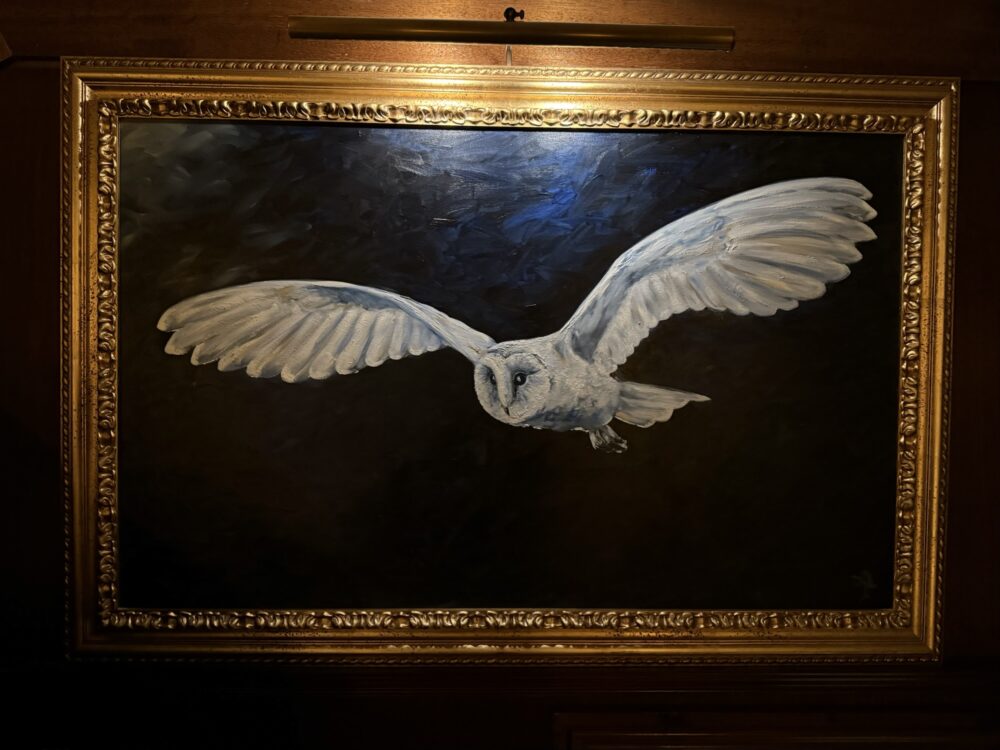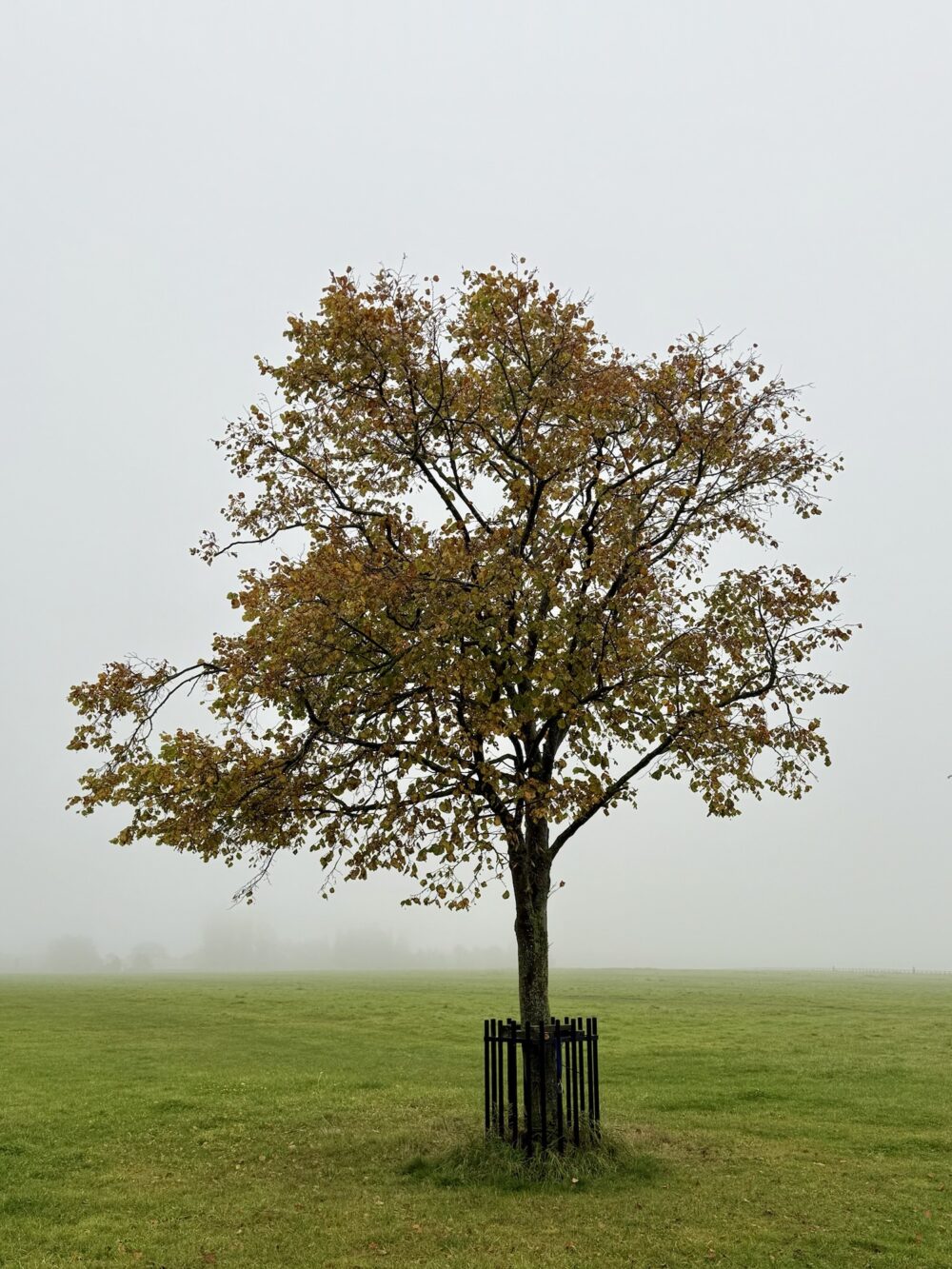
Kindness to all dumb animals
Your preparation for a future Only Connect round about people commemorated by fountains on Newcastle’s Great North Road continues. Having ticked off WD Stephens and ED Colvill, our attention is inevitably drawn to William Laing’s memorial fountain:
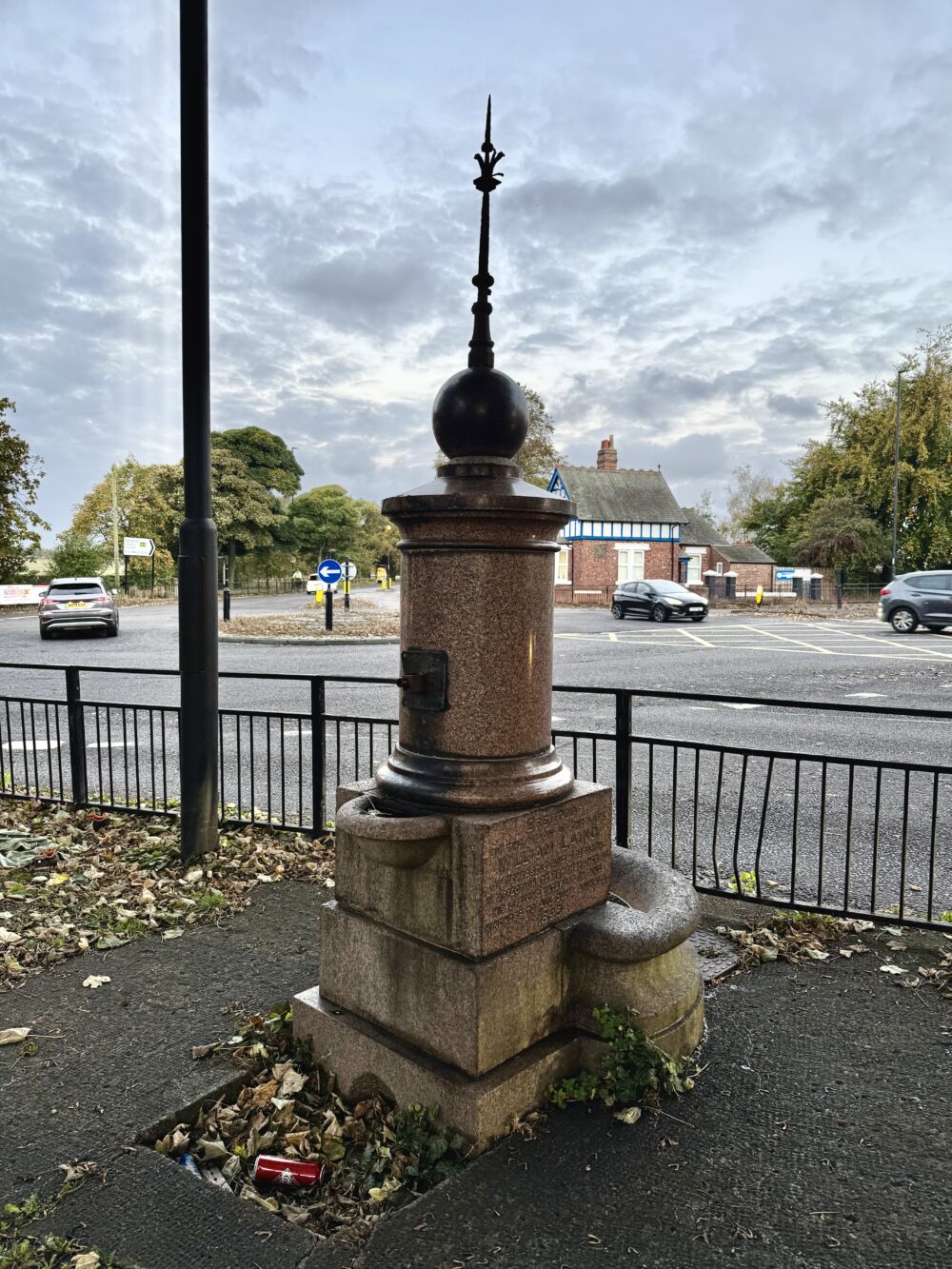
The inscription reads:
Erected by the widow of the late William Laing of Newcastle and Gosforth in affectionate remembrance of his lifelong interest and kindness to all dumb animals. 1895.
Laing was a business partner of Stephens, so perhaps memorial fountains were just de riguer in their social circle. Laing was also one of the founders of the Town Moor Temperance Festival, which has morphed these days into The Hoppings, which ordinarily takes place just across the road from this fountain.
The Laing art gallery in town is associated with the wine merchant Alexander Laing rather than the shipbuilding William Laing commemorated by this fountain. I’m not sure whether the two were related.
This post was filed under: Photos, Newcastle upon Tyne, William Laing.
Well and honourably known
I left you with a cliffhanger on Monday, with my post about the WD Stephens fountain. I’m sure you haven’t slept since!
I told you that the placement of the WD Stephens fountain had required another one to be moved out its way… and this is the fountain that had to move:
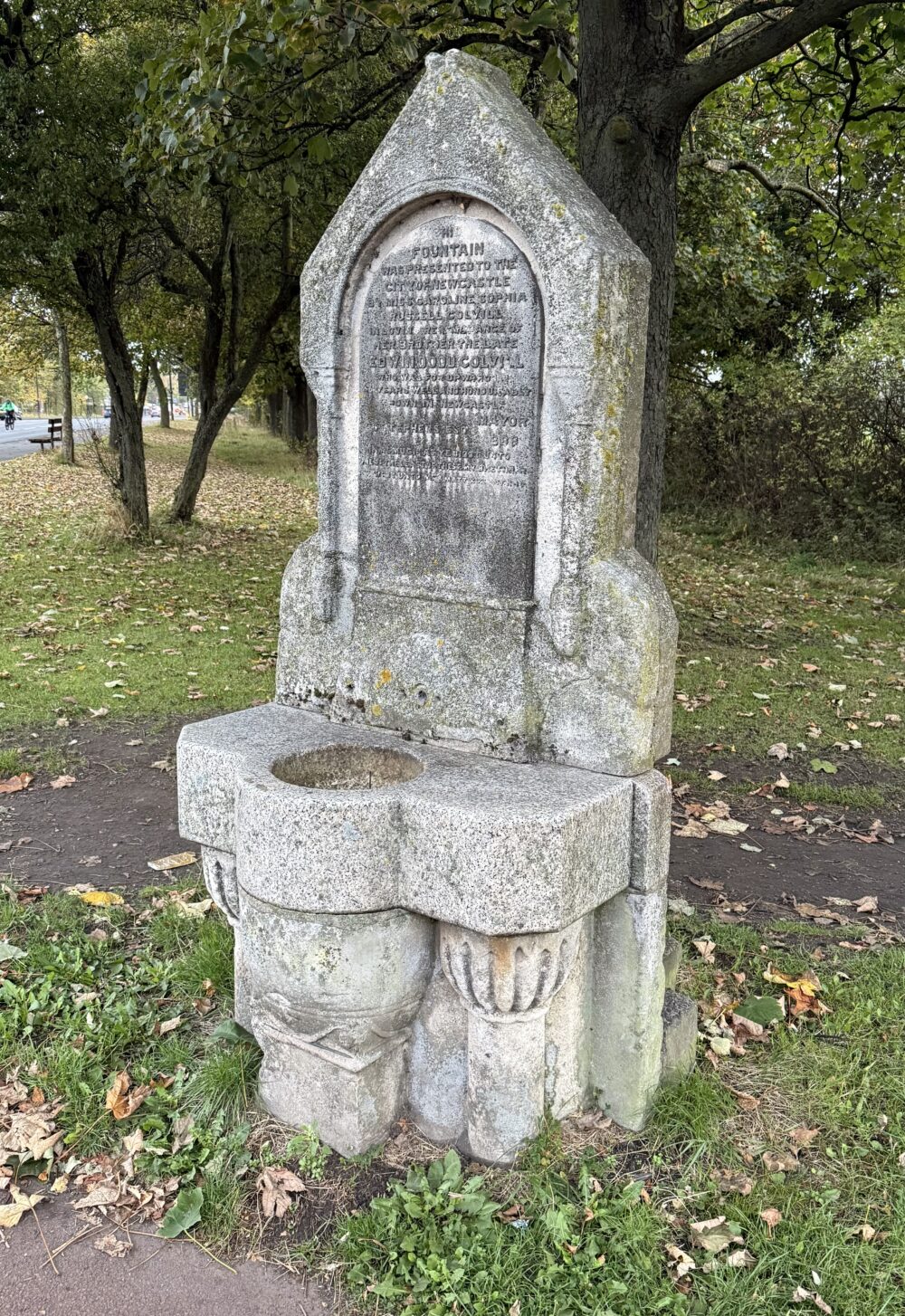
A 1889 granite tribute to Edwin Dodd Colvill, located just up the road from the WD Stephens fountain. The text reads:
This fountain was presented to the city of Newcastle by Miss Caroline Sophia Russell Colvill in loving remembrance of her brother the late Edwin Dodd Colvill who was for upwards ????? years well and honourably known in Newcastle.
In the section below that, I can make out the words ‘Mayor’, ‘Stephens Esq’ and ‘1888’. Since we know from the WD Stephens fountain that he was the mayor in 1888, I suspect this recorded the commissioning or unveiling of the statue.
Below that, although there are a lot of missing letters, I’m fairly sure there is a quote from Matthew 25:
Inasmuch as ye have done it unto one of the least of these my brethren, ye have done it unto me.
Perhaps undermining the inscription, unfortunately nobody seems to know anything but the barest details of Colvill’s life—he may have been well known at the time, but he isn’t any more, which is, I suppose, a fate to which we all succumb eventually, fountain or none.
This post was filed under: Photos, Edwin Dodd Colvill, Newcastle upon Tyne.
Victoria Tunnel
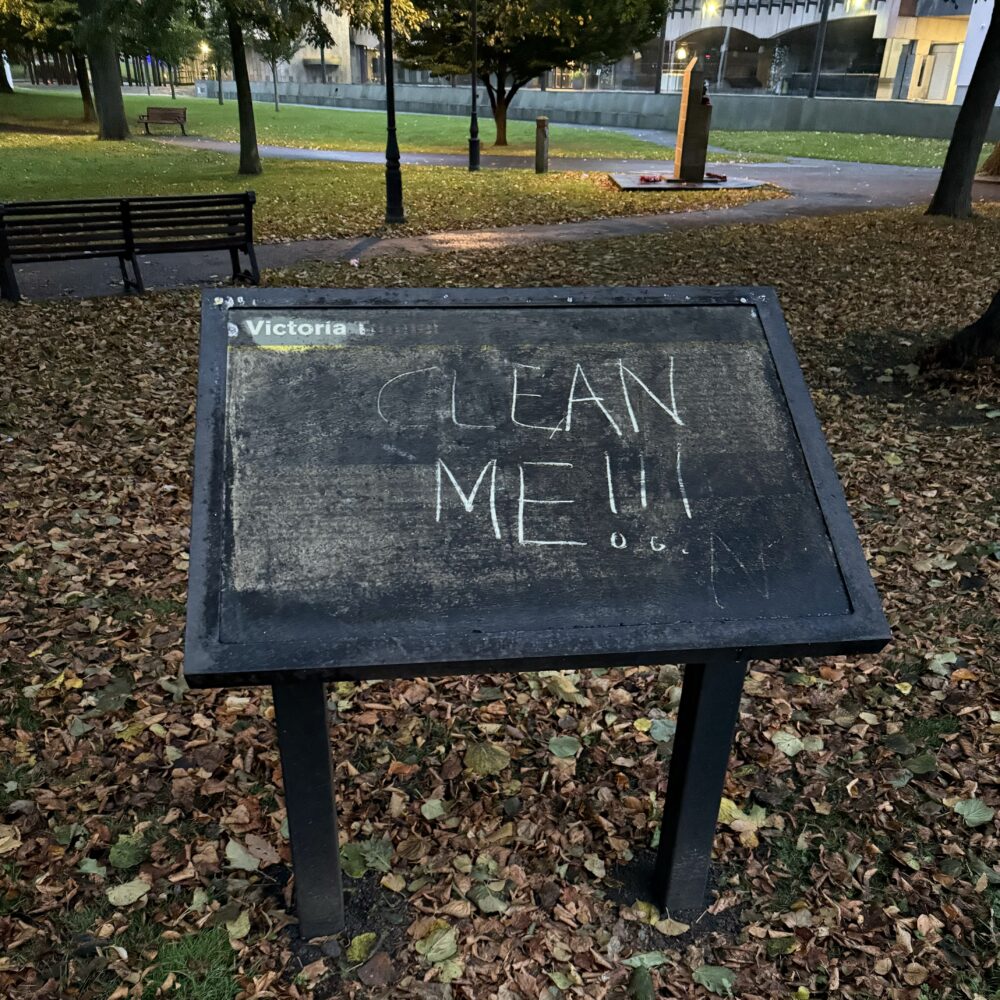
I’m pleased to report that the Victoria Tunnel is, thankfully, in somewhat better condition than its information board.
This post was filed under: Photos, Newcastle upon Tyne.
Lofty ideals and strenuous endeavour
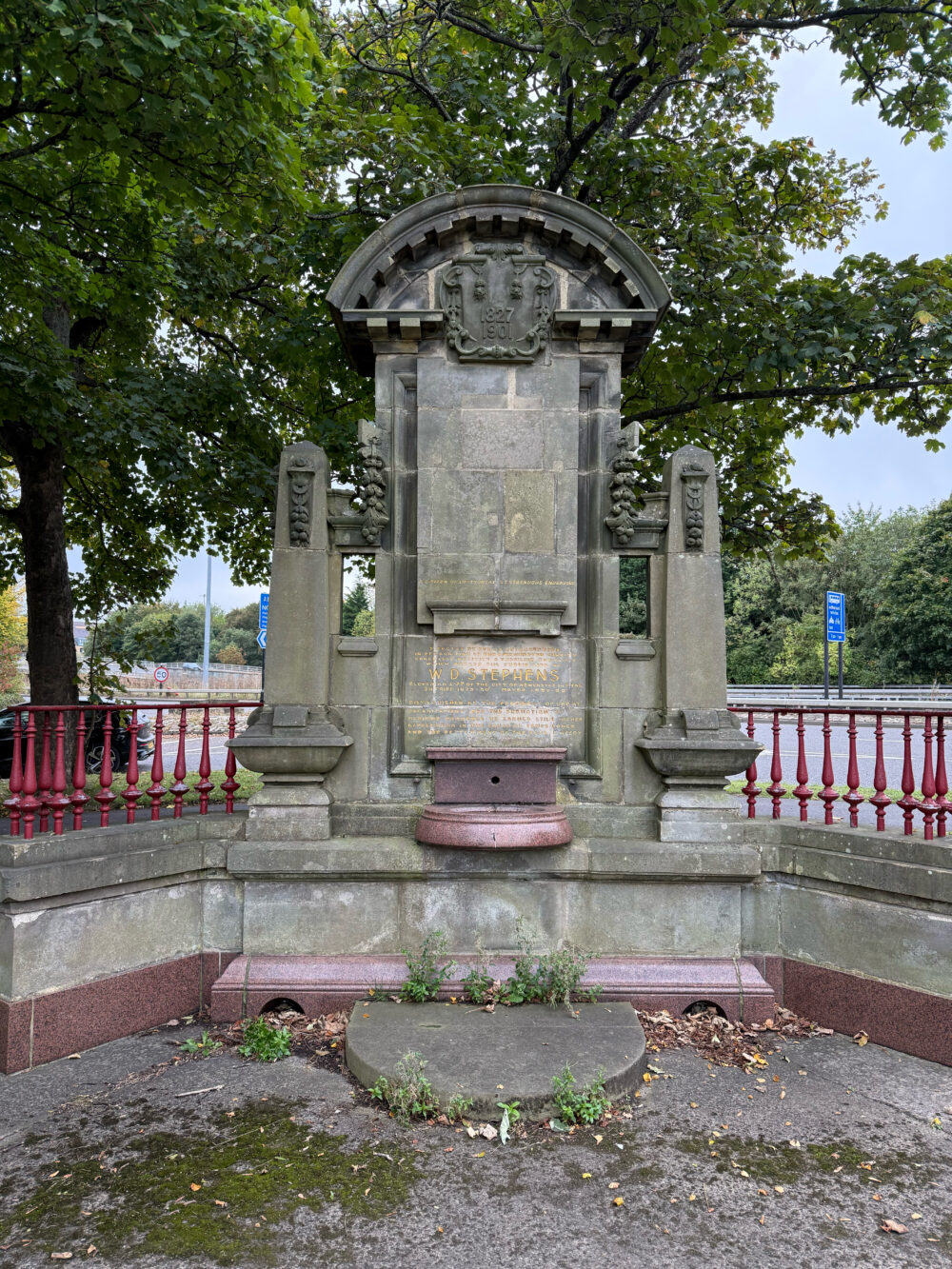
As I mosey to and from work each day, I pass a number of Victorian water fountains, none of which work. In the late Victorian era, much of Newcastle’s drinking water supply was rather too closely acquainted with its sewerage, so the building of fountains which supplied wholesome water was considered a noble and civic-minded endeavour.
This one, erected in 1906, is a tribute to WD Stephens, a local councillor, mayor, magistrate, businessman, and many other things besides. It used to feature a relief portrait of him in that big blank space, though it has long since been lost. The inscription reads:
1827-1901
A citizen of lofty ideals and strenuous endeavour.
Erected by public subscription in recognition of the openhearted charity, ceaseless activity & unfailing geniality which marked the public life of W.D. STEPHENS, Alderman & J.P. of the city of Newcastle on Tyne, Sheriff 1879-80, Mayor 1887-88
Distinguished as the president of great organizations for the promotion of maritime commerce he earned still higher appreciation in the cause of temperance and the betterment of the poor and needy.
Another fountain was booted up the road to make room for this one—perhaps I’ll tell you more about that another day—but karma comes back around, and the Stephens fountain itself eventually got booted out of the way of the central motorway and into its current location.
The fountain is Grade II listed.
This post was filed under: Photos, Newcastle upon Tyne, WD Stephens.
Edible emerald

It was flavoured with strawberry and champagne, and was unexpectedly soft and chewy.
This post was filed under: Photos, Fenwick, Newcastle upon Tyne.
‘Newcastle through the Ages’
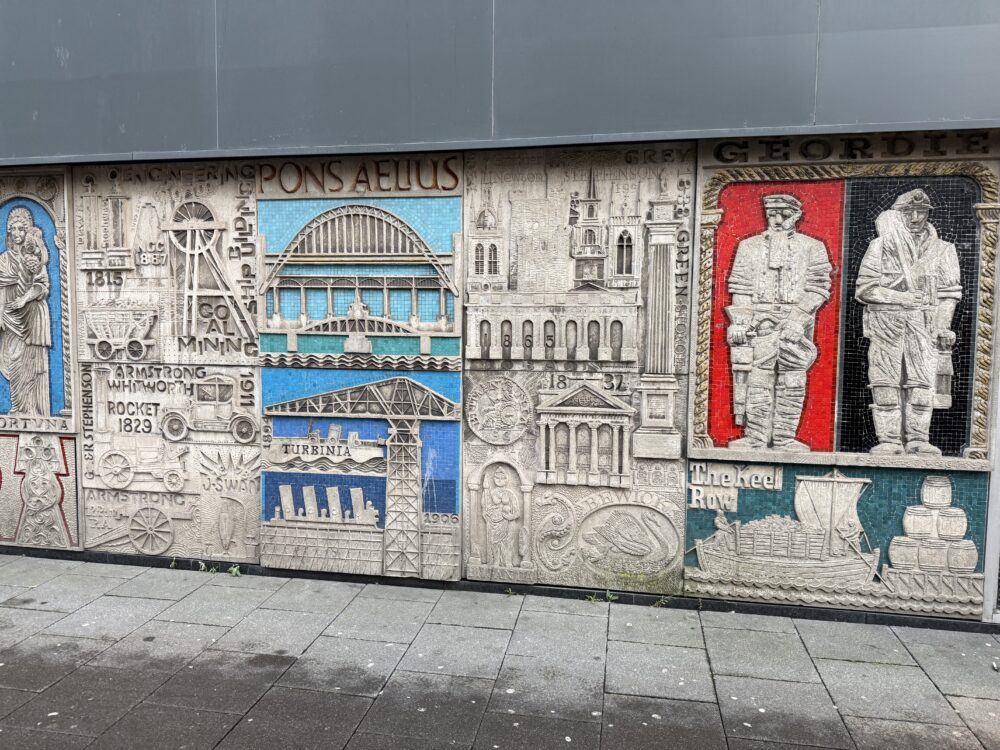
Henry and Joyce Collins were famed for making concrete murals. This photograph shows a portion of their mural ‘Newcastle through the Ages.’ This was part of a series they created for various branches of British Home Stores in the 1970s, by which time the pair were in their 60s. The Newcastle building to which this mural is attached is now occupied by Primark.
The Twentieth Century Society is keen on protecting post-war murals. I was surprised to see that Primark, with their extensive re-cladding of the BHS building, didn’t just get rid of this one—neither the mural nor Primark are to my taste, but I suppose there’s something commendable about protecting civic art.
This post was filed under: Art, Photos, Henry and Joyce Collins, Newcastle upon Tyne, The Twentieth Century Society.
Kaknästornet
Recent posts may have given you the impression that Stockholm is a beautiful city—that was certainly the impression left by my visit. Yet, I’m afraid, a monstrous carbuncle looms over the city: Kaknästornet.

Built in 1957, it is a broadcast tower with radio, television and satellite masts. Until 2018, it was open to the public, and had a notoriously poor restaurant looking out over the city—but these days, the security risks are considered too high for such frivolity.
